Xiaoyu Ma
Revisit Modality Imbalance at the Decision Layer
Oct 16, 2025Abstract:Multimodal learning integrates information from different modalities to enhance model performance, yet it often suffers from modality imbalance, where dominant modalities overshadow weaker ones during joint optimization. This paper reveals that such an imbalance not only occurs during representation learning but also manifests significantly at the decision layer. Experiments on audio-visual datasets (CREMAD and Kinetic-Sounds) show that even after extensive pretraining and balanced optimization, models still exhibit systematic bias toward certain modalities, such as audio. Further analysis demonstrates that this bias originates from intrinsic disparities in feature-space and decision-weight distributions rather than from optimization dynamics alone. We argue that aggregating uncalibrated modality outputs at the fusion stage leads to biased decision-layer weighting, hindering weaker modalities from contributing effectively. To address this, we propose that future multimodal systems should focus more on incorporate adaptive weight allocation mechanisms at the decision layer, enabling relative balanced according to the capabilities of each modality.
Improving Multimodal Learning Balance and Sufficiency through Data Remixing
Jun 16, 2025Abstract:Different modalities hold considerable gaps in optimization trajectories, including speeds and paths, which lead to modality laziness and modality clash when jointly training multimodal models, resulting in insufficient and imbalanced multimodal learning. Existing methods focus on enforcing the weak modality by adding modality-specific optimization objectives, aligning their optimization speeds, or decomposing multimodal learning to enhance unimodal learning. These methods fail to achieve both unimodal sufficiency and multimodal balance. In this paper, we, for the first time, address both concerns by proposing multimodal Data Remixing, including decoupling multimodal data and filtering hard samples for each modality to mitigate modality imbalance; and then batch-level reassembling to align the gradient directions and avoid cross-modal interference, thus enhancing unimodal learning sufficiency. Experimental results demonstrate that our method can be seamlessly integrated with existing approaches, improving accuracy by approximately 6.50%$\uparrow$ on CREMAD and 3.41%$\uparrow$ on Kinetic-Sounds, without training set expansion or additional computational overhead during inference. The source code is available at https://github.com/MatthewMaxy/Remix_ICML2025.
Hunyuan-TurboS: Advancing Large Language Models through Mamba-Transformer Synergy and Adaptive Chain-of-Thought
May 21, 2025Abstract:As Large Language Models (LLMs) rapidly advance, we introduce Hunyuan-TurboS, a novel large hybrid Transformer-Mamba Mixture of Experts (MoE) model. It synergistically combines Mamba's long-sequence processing efficiency with Transformer's superior contextual understanding. Hunyuan-TurboS features an adaptive long-short chain-of-thought (CoT) mechanism, dynamically switching between rapid responses for simple queries and deep "thinking" modes for complex problems, optimizing computational resources. Architecturally, this 56B activated (560B total) parameter model employs 128 layers (Mamba2, Attention, FFN) with an innovative AMF/MF block pattern. Faster Mamba2 ensures linear complexity, Grouped-Query Attention minimizes KV cache, and FFNs use an MoE structure. Pre-trained on 16T high-quality tokens, it supports a 256K context length and is the first industry-deployed large-scale Mamba model. Our comprehensive post-training strategy enhances capabilities via Supervised Fine-Tuning (3M instructions), a novel Adaptive Long-short CoT Fusion method, Multi-round Deliberation Learning for iterative improvement, and a two-stage Large-scale Reinforcement Learning process targeting STEM and general instruction-following. Evaluations show strong performance: overall top 7 rank on LMSYS Chatbot Arena with a score of 1356, outperforming leading models like Gemini-2.0-Flash-001 (1352) and o4-mini-2025-04-16 (1345). TurboS also achieves an average of 77.9% across 23 automated benchmarks. Hunyuan-TurboS balances high performance and efficiency, offering substantial capabilities at lower inference costs than many reasoning models, establishing a new paradigm for efficient large-scale pre-trained models.
Training a neural netwok for data reduction and better generalization
Nov 26, 2024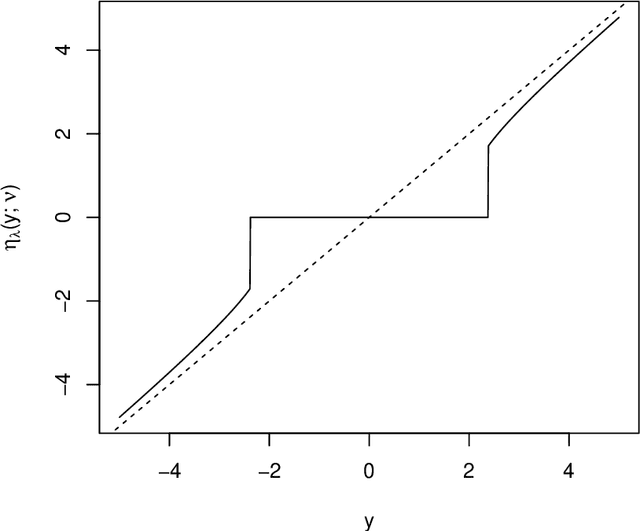
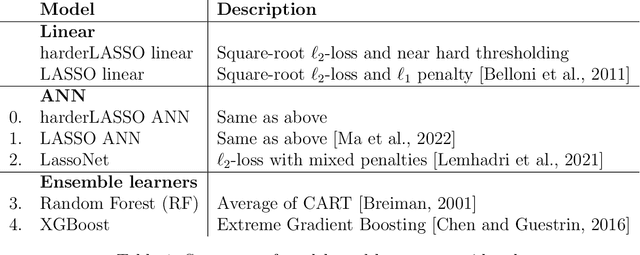

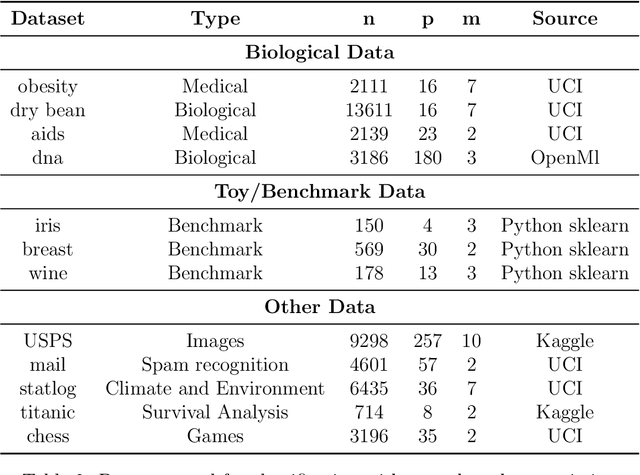
Abstract:The motivation for sparse learners is to compress the inputs (features) by selecting only the ones needed for good generalization. Linear models with LASSO-type regularization achieve this by setting the weights of irrelevant features to zero, effectively identifying and ignoring them. In artificial neural networks, this selective focus can be achieved by pruning the input layer. Given a cost function enhanced with a sparsity-promoting penalty, our proposal selects a regularization term $\lambda$ (without the use of cross-validation or a validation set) that creates a local minimum in the cost function at the origin where no features are selected. This local minimum acts as a baseline, meaning that if there is no strong enough signal to justify a feature inclusion, the local minimum remains at zero with a high prescribed probability. The method is flexible, applying to complex models ranging from shallow to deep artificial neural networks and supporting various cost functions and sparsity-promoting penalties. We empirically show a remarkable phase transition in the probability of retrieving the relevant features, as well as good generalization thanks to the choice of $\lambda$, the non-convex penalty and the optimization scheme developed. This approach can be seen as a form of compressed sensing for complex models, allowing us to distill high-dimensional data into a compact, interpretable subset of meaningful features.
TJDR: A High-Quality Diabetic Retinopathy Pixel-Level Annotation Dataset
Dec 24, 2023Abstract:Diabetic retinopathy (DR), as a debilitating ocular complication, necessitates prompt intervention and treatment. Despite the effectiveness of artificial intelligence in aiding DR grading, the progression of research toward enhancing the interpretability of DR grading through precise lesion segmentation faces a severe hindrance due to the scarcity of pixel-level annotated DR datasets. To mitigate this, this paper presents and delineates TJDR, a high-quality DR pixel-level annotation dataset, which comprises 561 color fundus images sourced from the Tongji Hospital Affiliated to Tongji University. These images are captured using diverse fundus cameras including Topcon's TRC-50DX and Zeiss CLARUS 500, exhibit high resolution. For the sake of adhering strictly to principles of data privacy, the private information of images is meticulously removed while ensuring clarity in displaying anatomical structures such as the optic disc, retinal blood vessels, and macular fovea. The DR lesions are annotated using the Labelme tool, encompassing four prevalent DR lesions: Hard Exudates (EX), Hemorrhages (HE), Microaneurysms (MA), and Soft Exudates (SE), labeled respectively from 1 to 4, with 0 representing the background. Significantly, experienced ophthalmologists conduct the annotation work with rigorous quality assurance, culminating in the construction of this dataset. This dataset has been partitioned into training and testing sets and publicly released to contribute to advancements in the DR lesion segmentation research community.
Flexible and efficient spatial extremes emulation via variational autoencoders
Jul 16, 2023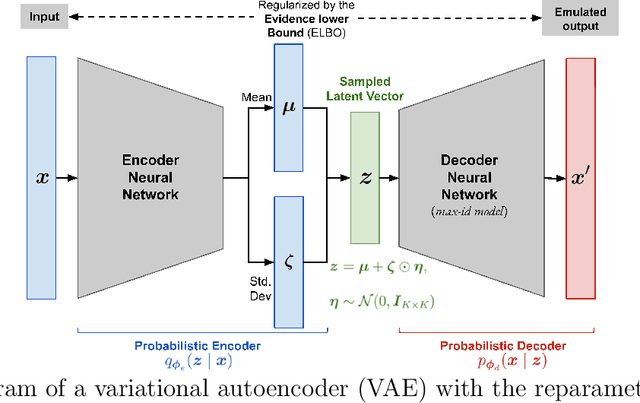



Abstract:Many real-world processes have complex tail dependence structures that cannot be characterized using classical Gaussian processes. More flexible spatial extremes models such as Gaussian scale mixtures and single-station conditioning models exhibit appealing extremal dependence properties but are often exceedingly prohibitive to fit and simulate from. In this paper, we develop a new spatial extremes model that has flexible and non-stationary dependence properties, and we integrate it in the encoding-decoding structure of a variational autoencoder (extVAE). The extVAE can be used as a spatio-temporal emulator that characterizes the distribution of potential mechanistic model output states and produces outputs that have the same properties as the inputs, especially in the tail. Through extensive simulation studies, we show that our extVAE is vastly more time-efficient than traditional Bayesian inference while also outperforming many spatial extremes models with a stationary dependence structure. To further demonstrate the computational power of the extVAE, we analyze a high-resolution satellite-derived dataset of sea surface temperature in the Red Sea, which includes daily measurements at 16703 grid cells.
Testing for context-dependent changes in neural encoding in naturalistic experiments
Nov 17, 2022
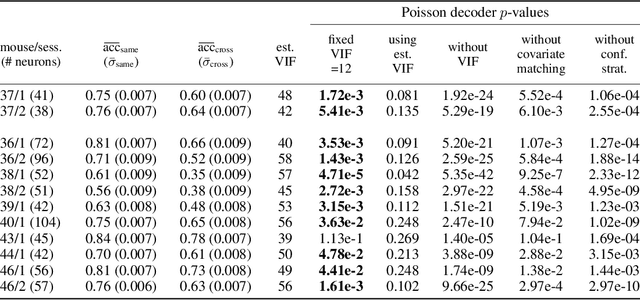

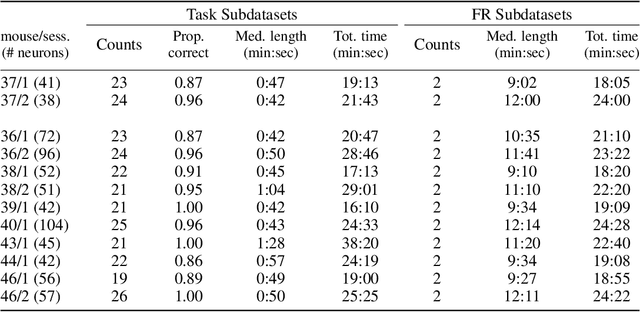
Abstract:We propose a decoding-based approach to detect context effects on neural codes in longitudinal neural recording data. The approach is agnostic to how information is encoded in neural activity, and can control for a variety of possible confounding factors present in the data. We demonstrate our approach by determining whether it is possible to decode location encoding from prefrontal cortex in the mouse and, further, testing whether the encoding changes due to task engagement.
A phase transition for finding needles in nonlinear haystacks with LASSO artificial neural networks
Jan 21, 2022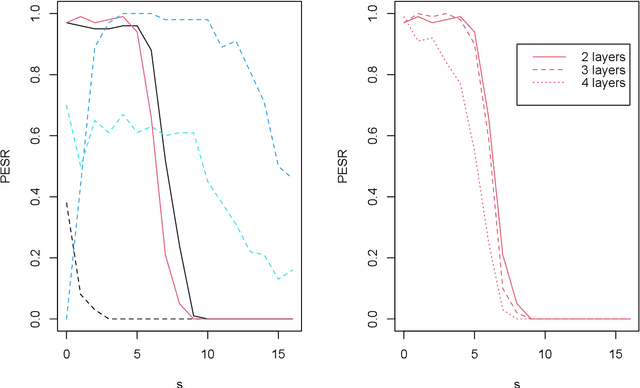
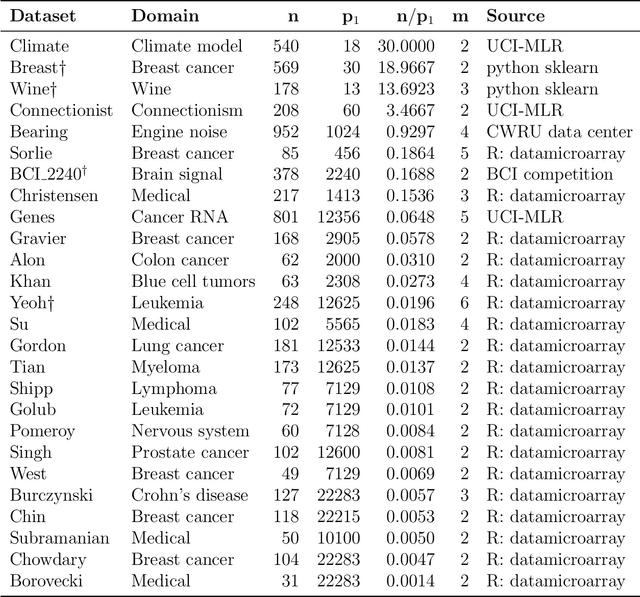
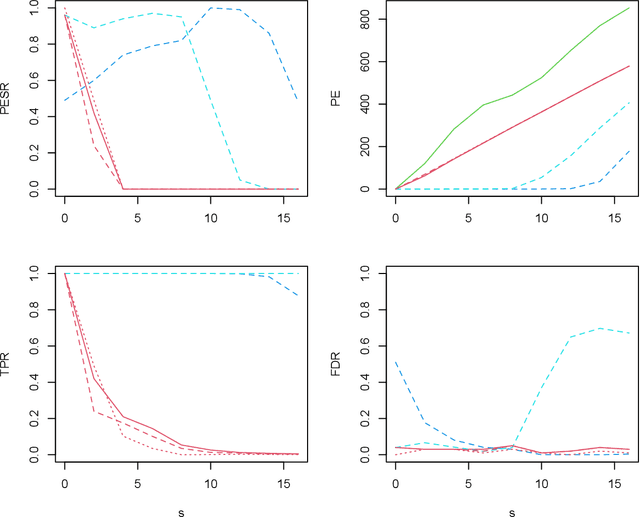
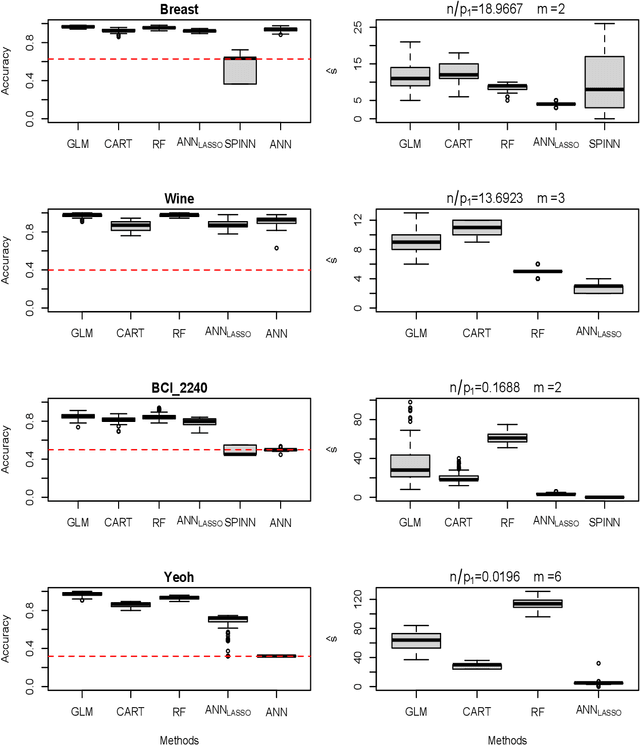
Abstract:To fit sparse linear associations, a LASSO sparsity inducing penalty with a single hyperparameter provably allows to recover the important features (needles) with high probability in certain regimes even if the sample size is smaller than the dimension of the input vector (haystack). More recently learners known as artificial neural networks (ANN) have shown great successes in many machine learning tasks, in particular fitting nonlinear associations. Small learning rate, stochastic gradient descent algorithm and large training set help to cope with the explosion in the number of parameters present in deep neural networks. Yet few ANN learners have been developed and studied to find needles in nonlinear haystacks. Driven by a single hyperparameter, our ANN learner, like for sparse linear associations, exhibits a phase transition in the probability of retrieving the needles, which we do not observe with other ANN learners. To select our penalty parameter, we generalize the universal threshold of Donoho and Johnstone (1994) which is a better rule than the conservative (too many false detections) and expensive cross-validation. In the spirit of simulated annealing, we propose a warm-start sparsity inducing algorithm to solve the high-dimensional, non-convex and non-differentiable optimization problem. We perform precise Monte Carlo simulations to show the effectiveness of our approach.
Google Neural Network Models for Edge Devices: Analyzing and Mitigating Machine Learning Inference Bottlenecks
Sep 29, 2021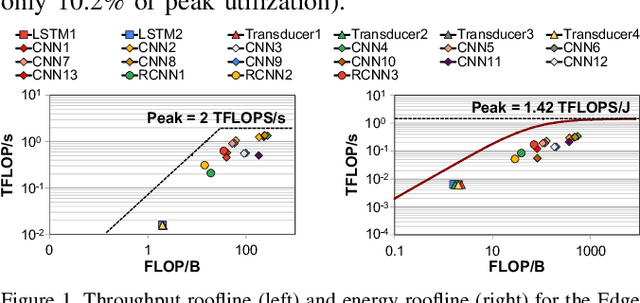
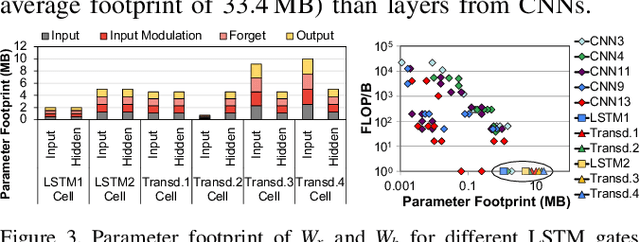
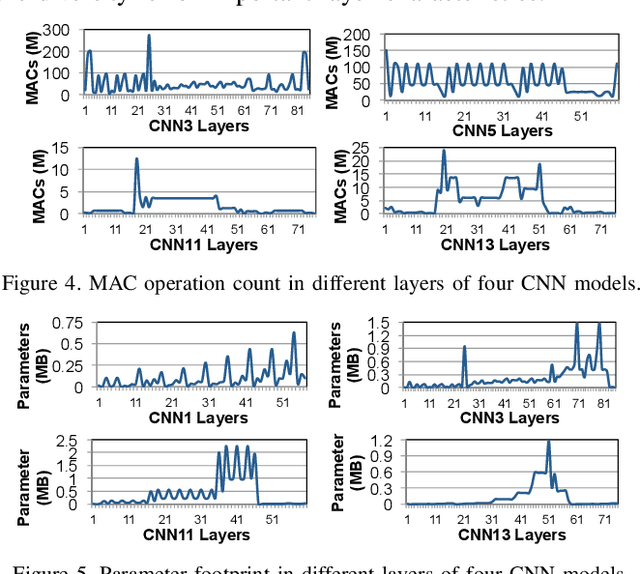
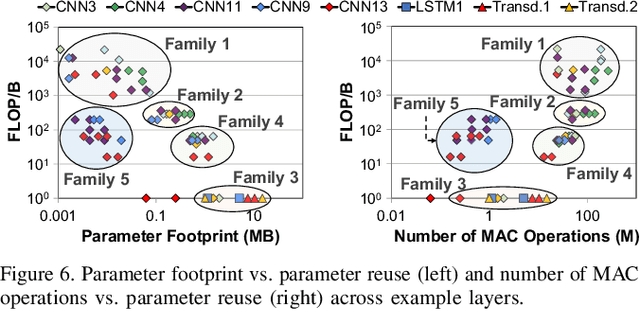
Abstract:Emerging edge computing platforms often contain machine learning (ML) accelerators that can accelerate inference for a wide range of neural network (NN) models. These models are designed to fit within the limited area and energy constraints of the edge computing platforms, each targeting various applications (e.g., face detection, speech recognition, translation, image captioning, video analytics). To understand how edge ML accelerators perform, we characterize the performance of a commercial Google Edge TPU, using 24 Google edge NN models (which span a wide range of NN model types) and analyzing each NN layer within each model. We find that the Edge TPU suffers from three major shortcomings: (1) it operates significantly below peak computational throughput, (2) it operates significantly below its theoretical energy efficiency, and (3) its memory system is a large energy and performance bottleneck. Our characterization reveals that the one-size-fits-all, monolithic design of the Edge TPU ignores the high degree of heterogeneity both across different NN models and across different NN layers within the same NN model, leading to the shortcomings we observe. We propose a new acceleration framework called Mensa. Mensa incorporates multiple heterogeneous edge ML accelerators (including both on-chip and near-data accelerators), each of which caters to the characteristics of a particular subset of NN models and layers. During NN inference, for each NN layer, Mensa decides which accelerator to schedule the layer on, taking into account both the optimality of each accelerator for the layer and layer-to-layer communication costs. Averaged across all 24 Google edge NN models, Mensa improves energy efficiency and throughput by 3.0x and 3.1x over the Edge TPU, and by 2.4x and 4.3x over Eyeriss~v2, a state-of-the-art accelerator.
Mitigating Edge Machine Learning Inference Bottlenecks: An Empirical Study on Accelerating Google Edge Models
Mar 01, 2021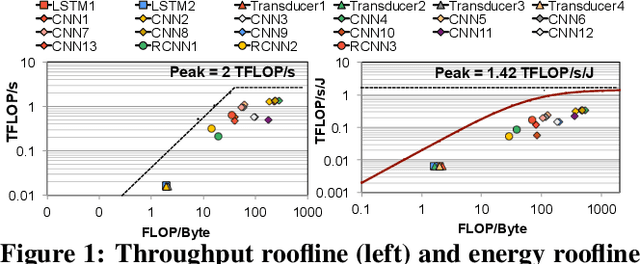
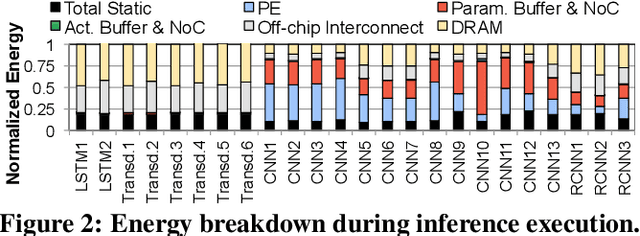
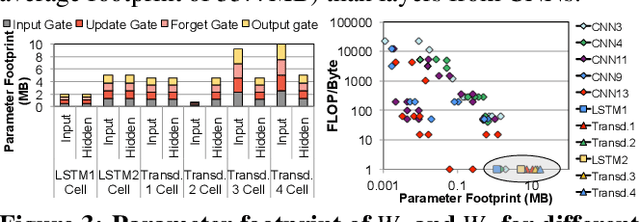
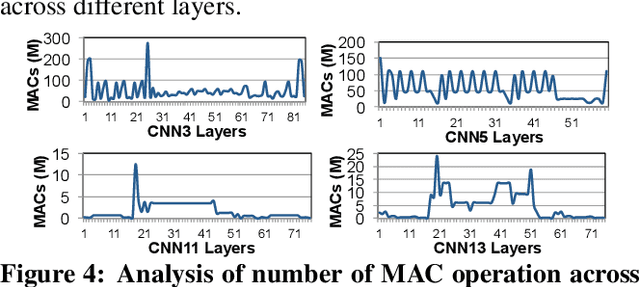
Abstract:As the need for edge computing grows, many modern consumer devices now contain edge machine learning (ML) accelerators that can compute a wide range of neural network (NN) models while still fitting within tight resource constraints. We analyze a commercial Edge TPU using 24 Google edge NN models (including CNNs, LSTMs, transducers, and RCNNs), and find that the accelerator suffers from three shortcomings, in terms of computational throughput, energy efficiency, and memory access handling. We comprehensively study the characteristics of each NN layer in all of the Google edge models, and find that these shortcomings arise from the one-size-fits-all approach of the accelerator, as there is a high amount of heterogeneity in key layer characteristics both across different models and across different layers in the same model. We propose a new acceleration framework called Mensa. Mensa incorporates multiple heterogeneous ML edge accelerators (including both on-chip and near-data accelerators), each of which caters to the characteristics of a particular subset of models. At runtime, Mensa schedules each layer to run on the best-suited accelerator, accounting for both efficiency and inter-layer dependencies. As we analyze the Google edge NN models, we discover that all of the layers naturally group into a small number of clusters, which allows us to design an efficient implementation of Mensa for these models with only three specialized accelerators. Averaged across all 24 Google edge models, Mensa improves energy efficiency and throughput by 3.0x and 3.1x over the Edge TPU, and by 2.4x and 4.3x over Eyeriss v2, a state-of-the-art accelerator.
 Add to Chrome
Add to Chrome Add to Firefox
Add to Firefox Add to Edge
Add to Edge